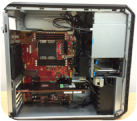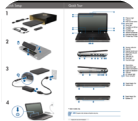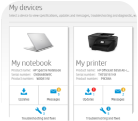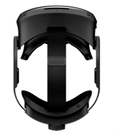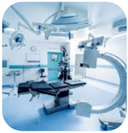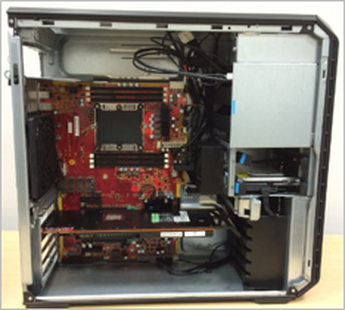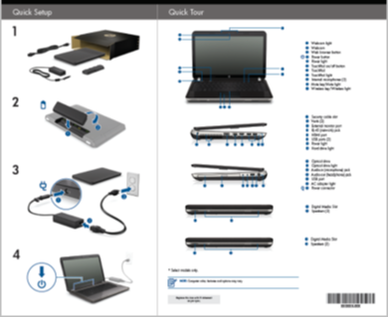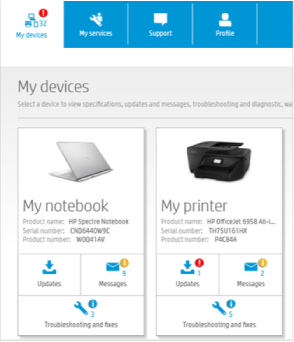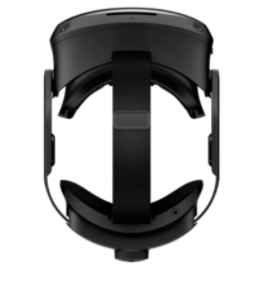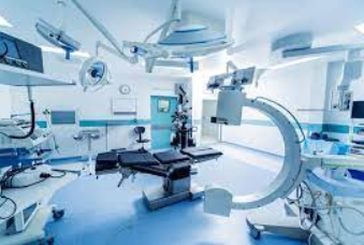Usability Testing
Workstation ServiceabilityOverview: When IT decision makers research the purchase of workstations, a primary consideration is the ease of upgrading, servicing and repairing the systems.
Problem: Workstations had to be easy to lift, covers needed to be secure but easily removed, internal components needed to be accessible and well marked. Methods: Iterative usability testing examined the placement of components, ease of cover removal, depth and location of handles, color coding of key touchpoints and ease of replacing or upgrading internal parts. |
Results: Through iterative usability and design, serviceability was improved and became a key differentiator for sales. Serviceability of workstations was mentioned as an important consideration for a successful 5 year contract win, valued at $125 million dollars.
Documentation RedesignOverview: Setup posters are included with all laptops. The poster redesign project looked at all posters, to streamline the creation process and maintain functionality and ease of use.
Problem: Posters were different sizes, there was variation in content and content was not shared across posters. Our team needed to test the existing posters, recommend and test changes to the posters and ensure that changes did not affect ease of use. Methods: Baseline usability test, iterative usability testing and recommendations throughout redesign. |
Results: Generic illustrations and reusable content reduced the development and training time of document managers. The reduced poster size and weight, saved on ink, paper and freight. This provided an annual savings of $3.2 million, without negatively impacting ease of use.
Streamlining SupportOverview: A Support Assistant is an application for your laptop and phone designed to help manage notifications, updates and troubleshooting for all of your devices.
Problem: The Support Assistant was intended to improve the customer’s ability to maintain and troubleshoot their devices but adoption was low. Our team needed to establish a baseline, make recommendations for improvement and begin iterative testing. Methods: Baseline usability test, competitive heuristic analysis, competitive usability tests, iterative usability testing throughout redesign. |
Results: The redesigned application saw increased adoption and decreased support calls. Time spent on the Support Assistant was converted into call center cost savings for an estimated impact of $25 million.
VR WeightOverview: Virtual Reality (VR) headsets rest on the head and have a weight associated with them. A new VR headset was being developed making it necessary to determine an acceptable weight for the device for a range of users.
Problem: VR headsets are heavy and could cause pain if worn for long periods of time. With the new hardware, it was important to determine where users would prefer to have the weight distributed. Methods: Participants were asked to wear a VR headset and play a game for 30 minutes in three different weight conditions then answered rating questions. Anthropometric data was collected and the ratings were compared to this data. |
Results: The client was able to determine the most comfortable weight distribution and where the hardware weight should be positioned on the new VR headset.
Medical DeviceOverview: A new medical device was developed to help a large population have more freedom and peace of mind when traveling with their specific medical condition. The project evaluated several potential models of the device and their respective carrying cases to identify user preferences and beneficial design aspects of each concept before moving into the next stages of design, development and production.
Problem: As this was a new concept for personal medical care, we needed to understand user preferences and identify any problems that could arise using this product in real life scenarios. The weight and size of the carrying cases, functionally of the device, and process of reusing the device were all discussed with users. Methods: Participants were recruited having medical conditions necessitating use of these types of products. Baseline usability test, user interviews, heuristic analysis, and pass/fail task measures were used. |
Results: We provided recommendations related to size/weight, discretion, and on-product cues for device usability and cleaning protocol to make the product usable by a larger demographic of users and reduce user error and discomfort. Results were used to support device through the FDA approval process.

